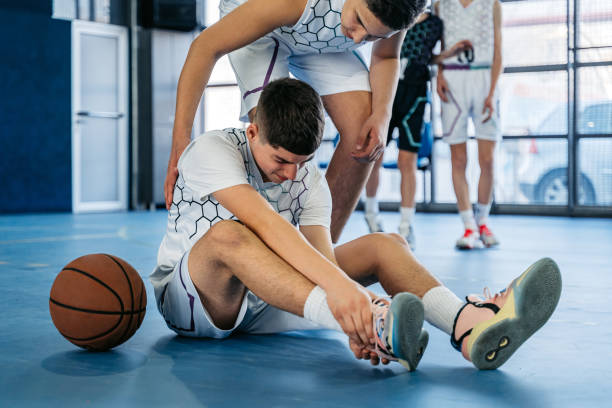Sports injuries are a common concern for athletes and fitness enthusiasts alike. Whether you're an avid runner, a weekend warrior, or a professional athlete, the risk of injury can be a daunting reality.
However, there are steps you can take to minimize the likelihood of sports-related injuries and keep yourself performing at your best. In this blog post, we'll explore strategies for preventing sports injuries and maintaining your physical well-being.
- Proper Warm-Up and Cool Down: One of the most effective ways to prevent sports injuries is to ensure that your body is adequately prepared for physical activity. This means incorporating a dynamic warm-up routine before exercise to increase blood flow to your muscles and improve flexibility. Similarly, cooling down after your workout with stretching can help prevent stiffness and reduce the risk of injury.
- Strength and Conditioning: Building strength and endurance through targeted exercise programs can help protect your body from injury. Focus on strengthening muscles around vulnerable areas, such as the knees, ankles, and shoulders, to provide better support and stability during physical activity. Incorporating functional exercises that mimic movements relevant to your sport can also improve overall performance and reduce the risk of injury.
- Proper Technique and Form: Paying attention to your technique and form is crucial for preventing sports injuries. Poor posture or improper movement patterns can place unnecessary strain on your muscles and joints, increasing the risk of injury over time. Take the time to learn the correct form for your chosen sport or exercise, and don't hesitate to seek guidance from a coach or trainer if needed.
- Listen to Your Body: It's essential to pay attention to signals from your body and recognize when you need to rest or scale back your training. Pushing through pain or ignoring warning signs of injury can lead to more severe problems down the line. Be mindful of any discomfort or unusual sensations during exercise, and don't hesitate to take a break or seek medical attention if necessary.
- Cross-Train and Rest: Varying your physical activity and incorporating rest days into your routine is key to preventing overuse injuries. Cross-training allows you to work different muscle groups and reduce repetitive stress on specific areas of the body. Additionally, adequate rest and recovery are essential for muscle repair and injury prevention, so be sure to prioritize sleep and recovery time between workouts.
- Nutrition and Hydration: Proper nutrition and hydration play a significant role in injury prevention and overall athletic performance. Fuel your body with a balanced diet rich in nutrients, including protein, carbohydrates, and healthy fats, to support muscle repair and recovery. Staying hydrated is also crucial for maintaining optimal performance and preventing cramps and fatigue during exercise.
- Gradual Progression: Avoid the temptation to increase the intensity or duration of your workouts too quickly, as this can increase the risk of injury. Instead, aim for gradual progression over time, allowing your body to adapt to increasing demands safely. Listen to your body's cues and adjust your training accordingly to avoid overexertion and minimize the risk of injury.
In conclusion, while sports injuries are a potential risk for athletes of all levels, there are steps you can take to minimize their occurrence and keep yourself healthy and active. By incorporating proper warm-up and cool-down routines, focusing on strength and conditioning, maintaining proper technique and form, listening to your body, cross-training and resting, and prioritizing nutrition and hydration, you can reduce the likelihood of sports-related injuries and enjoy the benefits of physical activity safely. Remember, injury prevention is an ongoing process that requires diligence and commitment, but the rewards of a healthy, active lifestyle are well worth the effort.






Comments